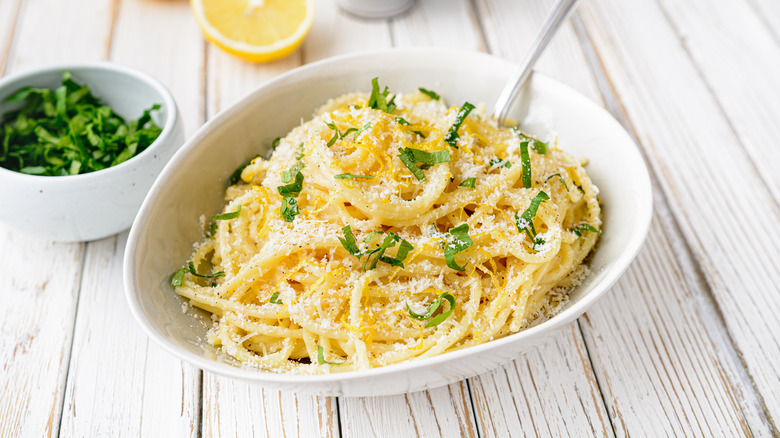What You Could Use Instead Of Butter In Pasta Sauce
When it comes to carbohydrates that are inexpensive, versatile, and delicious, many people believe that pasta wears the crown. From pillowy gnocchi to spindly capellini, the king of carbs has few limits on its forms and functions.
Even many novice chefs can whip up a pasta dish with a few simple ingredients and minimal steps to reach a finished product. While it could be as simple as reserving pasta water and adding seasoning, a bowl of buttered noodles can be a marvel in itself. Add some veggies or protein, and you've got a complete meal. Cacio e pepe, for example, is an Italian classic that requires only pasta, cheese, black pepper, and pasta water.
Many simple pasta dishes hinge on the use of butter or pasta water to lubricate the noodles and create a saucy texture. However, while butter has surprising health benefits, there's another way to achieve a similar result.
Cornstarch is key to pasta without butter
Seemingly no one likes a dried-out pasta dish. If you want to skip butter or pasta water but you're worried you'll have sticky, shriveled noodles, opt for cornstarch. Starch emulsifies any moisture left on the pasta and creates a saucy texture that binds the dish (per Christopher Kimball's Milk Street). You can add ½ teaspoon of cornstarch per cup of pasta to thicken and coat the noodles in flavorful goodness, according to Serious Eats.
You can also use cornstarch to recreate pasta water if, for example, you accidentally drain your pasta into an open sink as opposed to catching it in another pot to preserve the liquid. Use ¼ teaspoon of cornstarch for every cup of water to concoct a substitute (via Christopher Kimball's Milk Street).
Flour can also be used to make a gravy in situations like these. But when it comes to whether it's better than cornstarch for thickening food, cornstarch wins because it's a lighter alternative.

